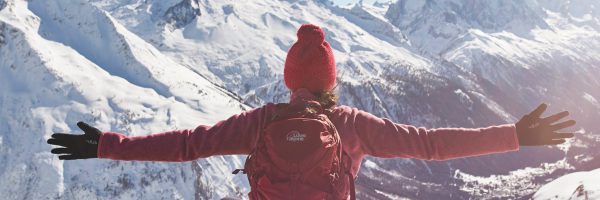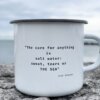Less than 200 people have ever made it to the North Pole. Clare O’Leary and Mike O’Shea attempted to become the first Irish team to get there by foot. We discover their story.
“We were moving on what felt like solid ground and then all of a sudden we came to a section with three separate pieces of ice. Just beyond where we were standing was a whole moving river of ice. And when I say moving, I mean it was moving at the same speed as a city bus. While we were standing there trying to figure out what to do, the ice we were standing on started to break beneath us. It all started moving. We had to climb back up the blocks as they were sinking, like hamsters on a wheel,” recalled Dr Clare O’Leary of her and Mike O’Shea’s traumatic journey back to civilization from their North Pole trek.
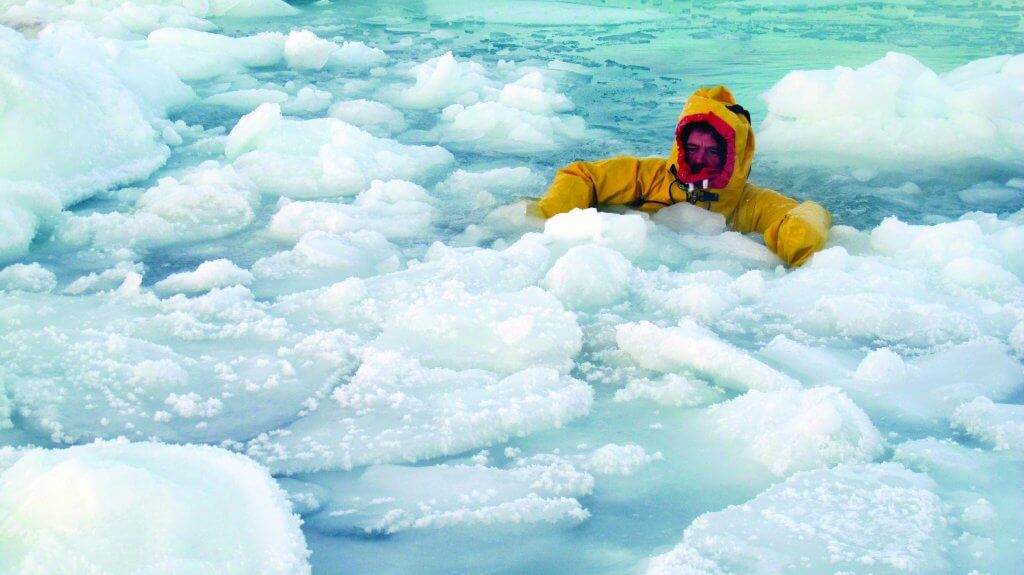
O’Leary and O’Shea were hoping to become the first Irish team to make it to the North Pole by foot. The task is undoubtedly a huge undertaking. Reinhold Mesner, one of the world’s greatest mountaineers and explorers, once said: “Everest is very dangerous, but crossing the North Pole, which I attempted to do…is ten times more dangerous.” Only 182 people have ever reached the North Pole, compared with 6,500 people who have climbed Everest. O’Leary and O’Shea were hoping to conquer this challenge that had defeated Mesner and many more after him.
In Numbers: 17 Times Irish Athletes Blew Our Minds in 2017
O’Leary has had two previous attempts to make it to the North Pole. Her first attempt was in 2010 with Pat Falvey and John Dowd. Unfortunately, Dowd suffered frostbite so they had to make an emergency evacuation from the ice. In 2011, O’Leary returned to Canada but due to severe weather conditions no plane was able to land in Cape Discovery within the allotted time frame.
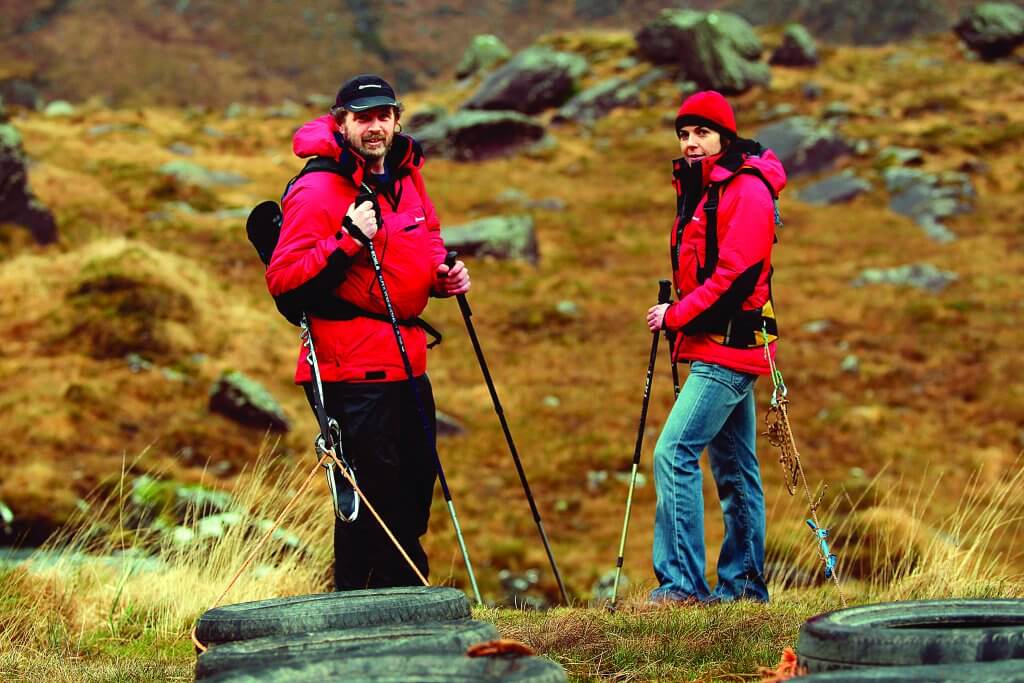
O’Leary has dedicated the past three years of her life to this expedition. O’Shea made the commitment to join the 2012 expedition last July. Preparing for such a mission takes serious dedication. O’Shea describes his routine leading up to the trip: “I would finish up work and head off to train every evening. I spent a lot of time on the rowing machine. Clare did a lot of strength and conditioning work. At the weekend we would do longer sessions, between four and eight hours, usually a lot of tyre pulling which is as close to pulling a sled as you can get. You work and you train and then every other spare minute is spent trying to get sponsorship and planning logistics.”
“Once we left the solid land at Cape Discovery, we were travelling on the ice of the polar cap. It’s on water so it was floating the whole time. That makes it dangerous. It can crack and open up, and leave a gap of 200 or 300 metres in front of you.”
The duo set off on their 778km journey from Cape Discovery on 2 March knowing that the first week would be toughest. “Once we left the solid land at Cape Discovery, we were travelling on the ice of the polar cap. It’s on water so it was floating the whole time. That makes it dangerous. It can crack and open up, and leave a gap of 200 or 300 metres in front of you, this is ultimately what happened on our way back. You should hear it, the sound of the ice cracking and breaking the whole time,” said O’Shea.
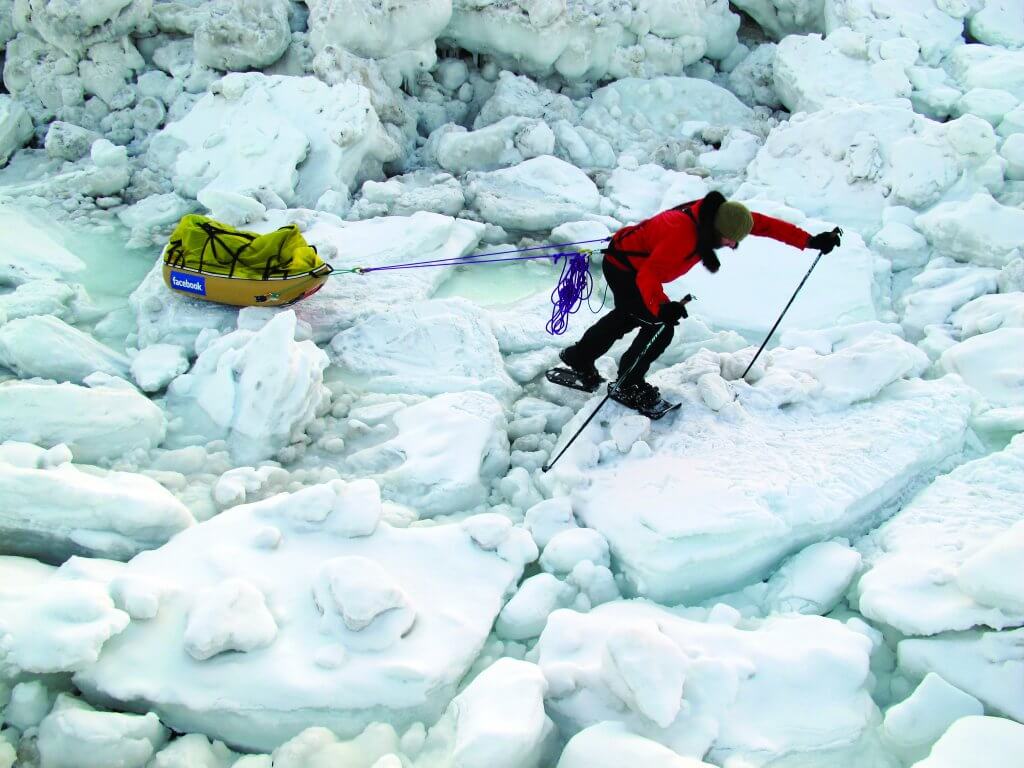
“A major challenge at the beginning was the sheer cold. We only had three hours of daylight at the beginning. We were experiencing spectacular sunrises and sunsets within 20 minutes of each other at the start. While the temperatures are similar to those I experienced at the South Pole, the lack of sunlight meant that there was no warmth from the sun so it felt so much colder,” said O’Leary.
The duo were also confronted with unprecedented storms in their first week. It was the worst weather experienced by the region in almost 30 years. O’Shea said: “I have spoken to people who spent 90 days on the ice and they had one storm. We had four storms, really bad blizzards with winds of up to 100kph, in the period of a week. This causes major problems up there. Because the ice is sea ice, once the wind starts blowing hard, the ice starts moving. There was huge movement. We were getting three or four nautical miles of drift per day. We could only cover two miles against the drift each day so from that perspective it was really difficult.”
O’Leary is no stranger to tough challenges. She has climbed the seven summits (the highest mountain on every continent) and has skied to the South Pole. O’Shea also has plenty of experience under his belt. He has travelled extensively around the world and is an experienced skier and climber. He has also participated in expeditions to K2 in Pakistan, Mt Cook in New Zealand and Ama Dablam in Nepal.
O’Leary and O’Shea were travelling without mechanical assistance or the help of dogs. They carried all of their equipment, clothing and food in a sled behind them. The sleds weighed a staggering 60kgs each (more than O’Leary’s body weight). The duo were carrying as much as their capacity would allow. Two food drops were scheduled for the trip, the logistics for which was to be shared with two other teams as O’Leary explained: “The flights that bring in the food are charters as the location is so remote. The cost for these charters is huge so we had arranged to split the cost with two other teams. One team never got their gear so they never made it out on the ice and the other person changed their plans. We would have had to cover the entire cost which would have been around $180,000. We had no other option than to turn back.”
“The minute we turned back we hit two storms in three days. We were stuck for a day, travelled for a day and then were stuck again for another day. The journey back really was touch and go.”
“It was a very difficult and disappointing decision to have to turn around. We have been moving well through the hardest section. But with our opportunity of shared supplies removed we were left with no choice but to return to the start point and get a charter out to Resolute Bay,” said O’Shea.

The return journey presented a dramatic turn of events for the Irish team. “The minute we turned back we hit two storms in three days. We were stuck for a day, travelled for a day and then were stuck again for another day. The journey back really was touch and go,” said O’Shea.
The new ice was so slushy, it just wouldn’t hold our weight. We were trying to climb back up on to the blocks as they were sinking.
Due to the high winds, much of the ice had broken. They were being pulled in an easterly direction. O’Shea described the point that could have ended disastrously: “The moment we realised we were no longer on solid ice was pretty alarming. There was a river of ice flowing at about 10mph. What we were standing on started to break up beneath us and then it began to move, quickly. The risk was that we would either get separated from one another or that we would lose our sleds or even worse that one of us would end up in the water. All of which would have had catastrophic consequences. The new ice was so slushy, it just wouldn’t hold our weight. We were trying to climb back up on to the blocks as they were sinking. They were sinking and rotating and we were scrambling to get back up on them. We had 15 minutes of that which is a long time.
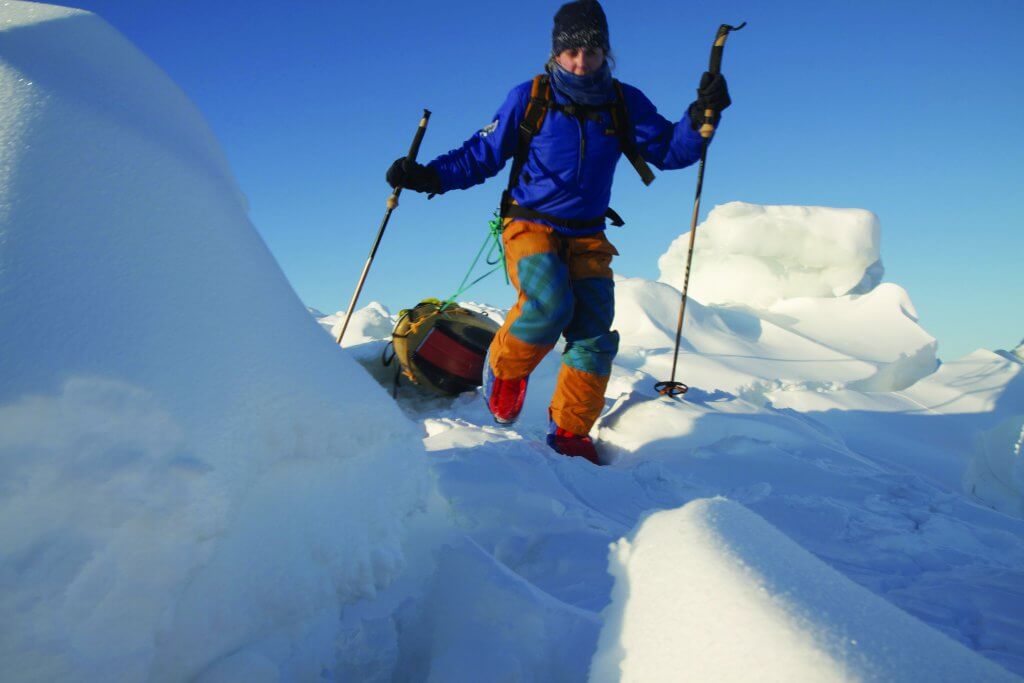
“We saw a block of ice coming down the fast moving stream. We made a decision to run for that. We were running with our 60kg sleds behind us. By the time I got near the block I was up to my calves in water. I fell onto the other side and started crawling to try and get up it as quick as I could. I knew that Clare was right behind me. We both made it onto that block but before we knew it that started to break up due to the pressure under the ice. The next thing we know we are on a piece of ice that is about 2×4 metres with our sleds hanging over the edge. It was moving so fast. There was water and slush on either side of us. We had to keep our cool in order to stay on the block and at the same time figure out how to get off it. We stayed there for about ten minutes until we saw an access point to get off it,” recalled O’Shea.
O’Leary shed further light on the dramatic turn of events: “While we were standing on that block of ice we could see blackwater up ahead. If we didn’t get off the block we were on before that, we were in serious trouble. On each side of us there was a wall of ice about two metres high, we had to wait for the right time to make a jump for it. We were on that block for about ten minutes – a long time, just waiting.”
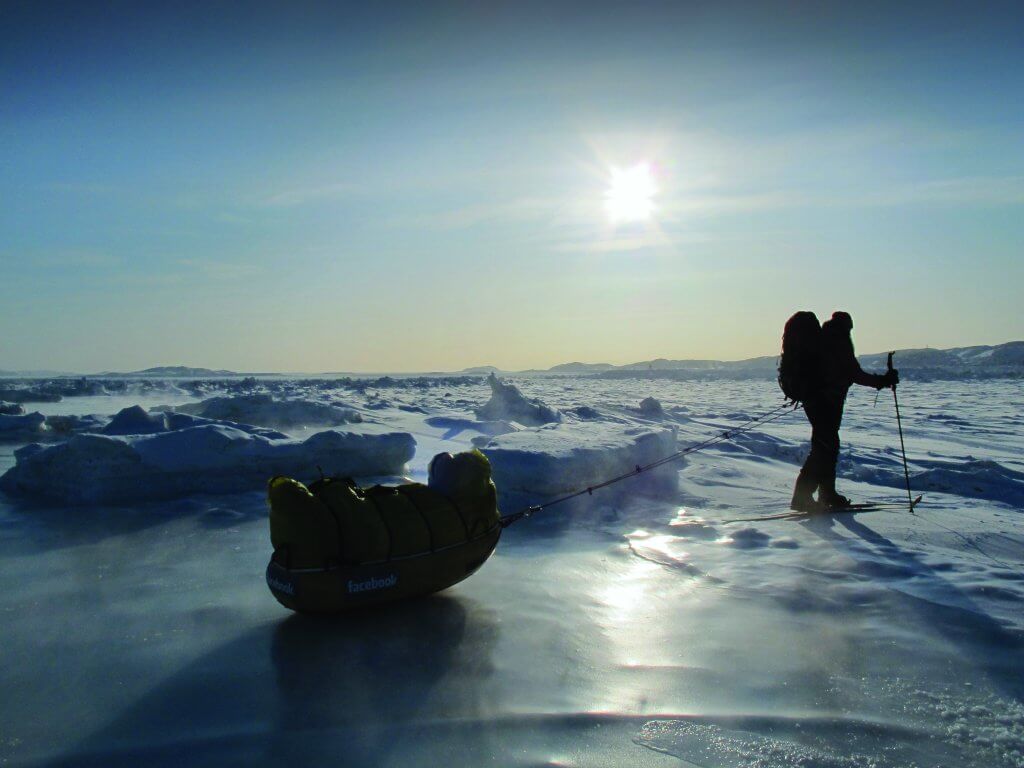
The duo saw a break in the wall of ice and made a jump for and thankfully they returned to their start point unharmed. “The problem up there is that it is just so remote. You really are on your own. There are no rescue teams, no helicopters, no nothing,” said O’Shea.
While the team had to contend with the negative aspects of the sheer remoteness they were overwhelmed by the dramatic scenery. “The area is not stark at all. Everywhere you look there are dramatic ice sculptures. There is no other life there at all, well apart from Polar bears of course but we were lucky enough not to see any of those,” says O’Leary.
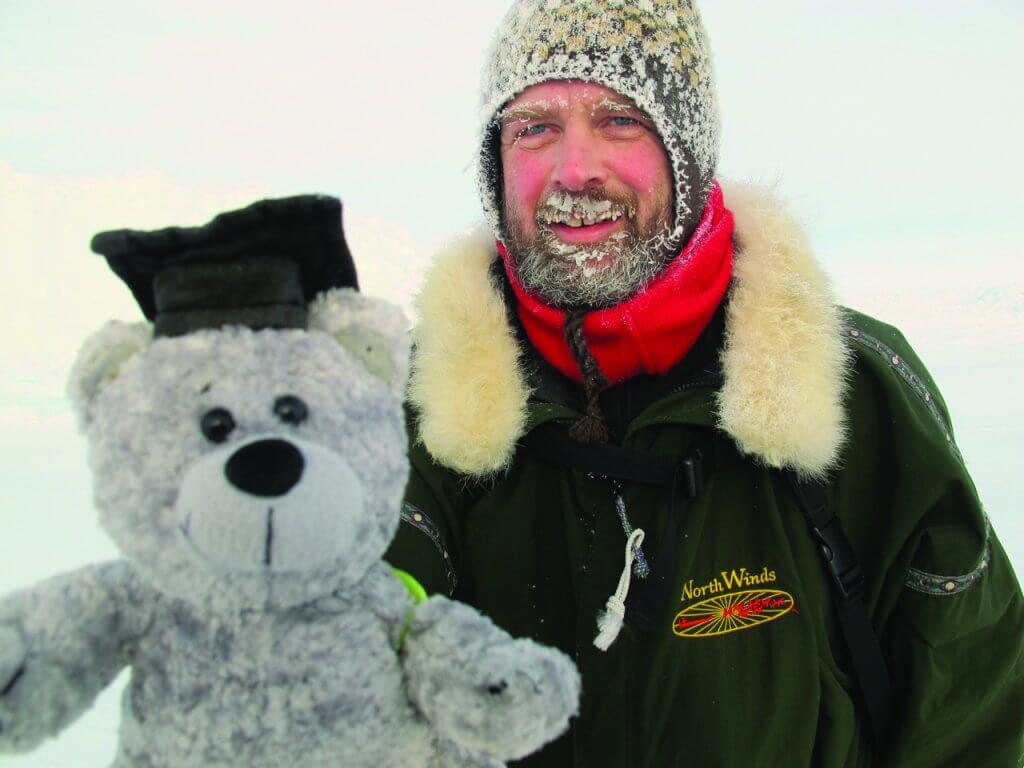
Despite the turn of events, O’Leary and O’Shea are determined to head back next year and complete it. Polar exploration is a relatively new phenomenon in Ireland. The first Irish person to reach the South Pole was Mike Barry in 2003. An Irish person has not yet made it to the North Pole but watch this space as it looks like 2013 will be the year that changes.
Check out our Hard as Nails podcast:
For more awesome adventure inspiration, check out our articles below:


